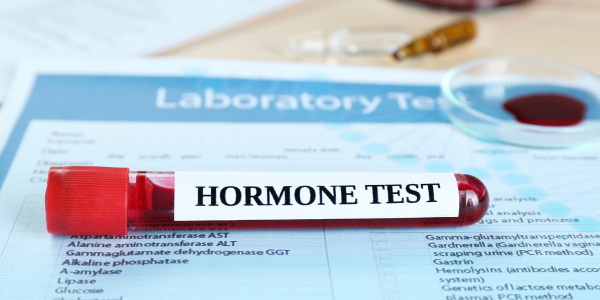

Digestive issues are one of the most frustrating conditions anyone can suffer from. They’re also incredibly common – millions of Americans suffer from conditions like irritable bowel syndrome, leaky gut (intestinal permeability), inflammatory bowel disease, celiac disease, Crohn’s disease, ulcerative colitis, and now, the relatively new-kid-on-the-block – small intestinal bacterial overgrowth or SIBO.
You’ve probably heard of your gut microbiome and know that there are trillions of bacteria and other microbes living in your gastrointestinal tract. However, what many people don’t realize is most of the bacteria is located in the large intestine (or colon) – but not in the small intestine.
The small intestine is the longest section of your digestive tract as it is several feet long, and it’s primary job is to digest and absorb nutrients. In fact, the small intestine is supposed to have the least amount of bacteria of your entire gastrointestinal tract.
With SIBO, bacteria that shouldn’t be present migrate into the small intestine at high levels. The reason this is a problem is because when there are too many bacteria in your small intestine, it interferes with important nutrient absorption. Obviously, this is a huge problem because we need those nutrients for the millions of functions that keep our bodies healthy. Additionally, the most problematic bacteria can cause bloating, abdominal pain, diarrhea, or constipation, as well as symptoms outside of the GI tract, like brain fog for example.
10 Signs and Symptoms of SIBO
The clinical definition of small intestinal bacterial overgrowth is excessive bacteria in the small intestine, which can cause symptoms ranging from mild to debilitating. SIBO can look different from patient to patient and it’s very common for it to overlap with other gastrointestinal disorders.
The top 10 most common signs and symptoms of SIBO include:
- Gas
- Bloating
- Constipation
- Cramping
- Diarrhea
- Abdominal pain
- Food sensitivities
- Histamine intolerance
- Rosacea and other skin conditions
- Nutrient deficiencies
One of the biggest culprits of gastrointestinal symptoms when it comes to SIBO, is the methane and hydrogen production by the archaebacteria. In particular, constipation is strongly associated with methane. In a SIBO breath test, methane is associated with a high constipation rate. And hydrogen dominance is typically associated with more diarrhea, although this is not set in stone.
SIBO Isn’t Usually Alone
You should consider checking for SIBO if you’ve been diagnosed with other gastrointestinal disorders, such as leaky gut or irritable bowel syndrome. Dr. Gerard Mullin an integrative gastroenterologist from Johns Hopkins Medical Center has stated that about 56% of patients with irritable bowel syndrome, also have SIBO. And other experts have thought the rate of SIBO occurence is up to 80% of all patients diagnosed with IBS.
Other factors that should cause you to check for SIBO include:
- If you’ve ever been diagnosed with an autoimmune disease
- If you’ve been diagnosed with a chronic gastrointestinal disease
- If you have diabetes
- If you have have been on an acid blocking medication long-term
- If you have had many courses of antibiotics over your life
- If you have nutrient deficiencies, especially B12 deficiency
- If you have skin rashes, especially rosacea
Is Your Rosacea Caused by SIBO?
The SIBO and rosacea connection is an especially interesting one. Rosacea patients are significantly more likely to have SIBO than the average population. In fact, I’ve had patients who’s rosacea has cleared up after their SIBO diagnosis and treatment. This is because the gut and the skin Influence one another along what’s called the gut-skin axis.
Rosacea is one of the most common skin disorders and until recently, treatments have been largely ineffective. The SIBO/rosacea connection reinforces our understanding of the guts impact on skin health. This has much broader implications for other skin conditions and begs the question:
Could new treatments for conditions like eczema, psoriasis, and acne lie in the gut?
I believe the answer is yes!
Testing for SIBO
When it comes to testing for SIBO, there are a couple of different things that can be done. The most common test is a lactulose breath test, although glucose is sometimes used as substrate as well in some cases. After a 12-hour fast and consuming a dose of lactulose, you breathe into a balloon or set of tubes and samples are taken. The breath test measures the hydrogen and methane levels at various time intervals in the gut, which are indicators of SIBO. Though the breath test can be somewhat time consuming, it’s a great non-invasive option.
If you suspect you have SIBO, you can also do some trial and error with your diet to see if things like the low FODMAP, SCD, or GAPS diet improve your symptoms. Especially when SIBO is still in its mild form, a lot can be done with natural treatments to help reverse the overgrowth in the small intestine.
Natural Treatments for SIBO
Diet and supplements can help decrease symptoms of SIBO, though sometimes doctors will prescribe antibiotics and/or herbal antimicrobials for treatment, or an elemental diet, which consists of medical food “protein” shakes for all of your calories for 7-14 days. Here are strategies you can employ yourself, and track to see if symptoms improve.
- Eliminate sugar – One of the first things you should do if you suspect you have SIBO is eliminate sugar, refined carbohydrates, and alcohol. This will help reduce food sources to the bad bacteria that’s causing a lot of your symptoms.
- Low FODMAP diet – A low FODMAP diet takes the low-sugar, low-carb diet one step further and reduces special carbohydrates that are found in some fruits and vegetables. Some of these foods are even considered healthy. This diet further reduces the food sources for harmful bacteria. The low FODMAP diet is very effective but also not meant to be used long-term. You can try using the low FODMAP diet and see if you have good results over the course of a few weeks.
- Atrantil – Atrantil is a botanical supplement developed by a gastroenterologist for people with SIBO, though it’s marketed for bloating and abdominal discomfort. Atrantil incorporates peppermint leaf, quebracho extract, and horse chestnut, which work together in a three-step process. First, the peppermint calms the small bowel and gives you faster relief from your symptoms. Next, the quebracho soaks up methane and makes it difficult for archaebacteria to survive. Finally, horse chestnut damages archaebacteria to stop further methane production. It is not a stand alone cure for SIBO, however can be really helpful in reducing symptoms.
- Probiotics – We know probiotics are good for helping our gut microbiome but they may be especially beneficial to those with SIBO. One study found that 82 percent of those who took specific probiotics and had the symptoms of abdominal distention, saw significant results after taking probiotics. There is some variation in patient responses to different types of probiotics, as some patients with SIBO can not tolerate typical probiotics with lactobacillus and bifidobacterium, however, will do better with soil based probiotics like Prescript Assist Pro, Core Biotic, or Mega Spore Biotic for example.
If you suspect you have SIBO, I encourage you to make an appointment with your functional medicine doctor and tell them about your concerns. SIBO could be the underlying cause of your mysterious symptoms.
If you’re looking for a Phoenix/Scottsdale functional medicine doctor who has experience in treating SIBO, you can request an appointment here or call 602-892-4727. If you’re not in the Phoenix area, I encourage you to check the certified practitioner listing with the Institute for Functional Medicine.
Don’t ignore symptoms of gut distress. If you’re experiencing gas, bloating or constipation, it’s time to pay attention and listen to your gut. You can do something about your symptoms and start your journey towards relief today.
Resources:
https://www.ncbi.nlm.nih.gov/pmc/articles/PMC5347643/
https://www.ncbi.nlm.nih.gov/pmc/articles/PMC3099351/
http://www.jnmjournal.org/journal/view.html?uid=132&vmd=Full
https://www.drweil.com/health-wellness/body-mind-spirit/gastrointestinal/diet-to-cure-SIBO/
https://www.ncbi.nlm.nih.gov/pubmed/18456568
https://atrantil.com/how-atrantil-works/
https://www.ncbi.nlm.nih.gov/pubmed/27554239
Share:
Social Media
Most Popular Posts
Subscribe To Our Newsletter
Related Posts

New Podcast Episode: My journey into functional medicine + what I’ve learned
I’m excited to share that I recently joined DeLo for Episode 165 of the On the DeLo podcast! In this conversation, we explored my journey

Understanding the Essential Labs for Women on Hormone Replacement Therapy (HRT)
So what are the minimum labs we’re looking at when we do hormone replacement therapy? We obviously want to look at an estrogen level, so

How to figure out the right amount of HRT in women
What about checking lab values when you’re on hormone replacement therapy? I do find it to be helpful, but we also want to consider symptoms.

Did you know there’s a difference between food allergies, sensitivities, and intolerances?
Did you know that there’s a difference between food allergies, food sensitivities and food intolerances? Food allergies, the reactions tend to happen pretty immediately and
